
Welcome to the Tutorials of Oracle BPM. The intent of these tutorials is to provide you an in-depth understanding of the Oracle SOA 11g suite. In these tutorials, we will cover topics such as the installation of Oracle SOA 11g, configuring adapters, creating business rules, and SOA projects. We will also discuss in detail about security in Oracle SOA 11g, and different protocols that we use to connect to partner systems
In addition to Oracle SOA 11g Tutorials, we will look at common interview questions, how-to tutorials, issues, and their resolutions.
If you want to enrich your career and become a professional in Oracle BPM, then visit Tekslate - a global online training platform: "Oracle BPM Training" This course will help you to achieve excellence in this domain.
This section is to equip learners with key components of an Oracle BPM application and architectural concepts. This knowledge is essential for understanding the tutorial practice in section 6 onwards which is only dedicated to procedural steps.
Oracle offers a comprehensive BPM environment based on Service Component Architecture. We can participate in this environment with different roles: business analyst, BPM developer, system administrator, or process user. In this tutorial, we will involve in all of these roles through our hands-on practice; therefore this section would attempt to cover a quite complete overview picture.
The stages of the development life cycle of an Oracle BPM application are outlined below.

The core of Oracle BPM product is Oracle BPM Run-Time as shown below. 
Oracle BPM Runtime or “service infrastructure” provides the internal message transport infrastructure for connecting components and enabling data flow. The service infrastructure is responsible for routing messages along with the wire connections between services, service components, and references. BPEL Service Engine For process orchestration of synchronous and asynchronous
For creating and modeling business processes using Business Process Management Notation and Modeling (BPMN). The BPEL, BPMN, and Process Core (provided shared services for both BPMN and BPEL engines) are commonly called BPM engines. Since we are going to work extensively with BPMN Engine, let’s take a deeper look at the figure below.
Notably, according to Oracle documentation, BPMN Service Engine is actually an extension of the existing BPEL Service Engine and as such it leverages the core infrastructure of the BPEL. The BPMN Service Engine leverages JPA/EclipseLink to store/recover the state of a process instance in the SOA Infrastructure dehydration store maintained by a database and to persist audit records that are created in the course of running a process. MDS APIs are used to retrieve metadata Information about the BPMN Process Model and other BPM project artifacts like the Business Catalog.
For making a decision or for processing based on business rules.
For modeling a human task (for example, manual order approval) that describes the tasks for users or groups to perform as part of an end-to-end business process flow. This engine is also used extensively in this tutorial. The details of its services are shown below. We can see that the Human Task Workflow Engine is a major set of SOA components to manage a wide range of human-related services, including routing, roles and permission, security, timers, interaction with the user interface, and notification.

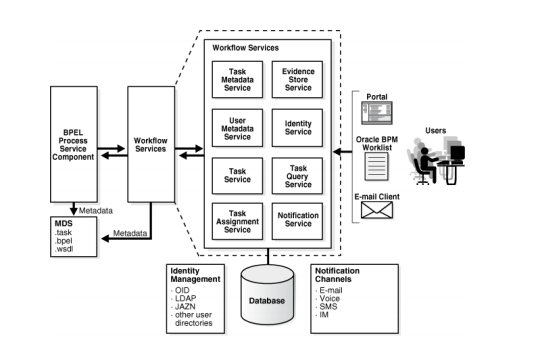
Checkout Our Frequently Asked Oracle BPM Interview Questions
Download weblogic 10.3.6.0 generic jar (I am using Oracle Linux 64, for windows 64-bit system you need the same installable).
[java_home]/bin/java –jar wls1036_generic.jar

Select FMW Home created in step 1: Selecting the fusion middleware home location will inform the installer where it needs to install the WebLogic. Make sure you select the second radio button “Create a new Middleware home” and provide the right location of the few Home under the Middleware Home Directory.
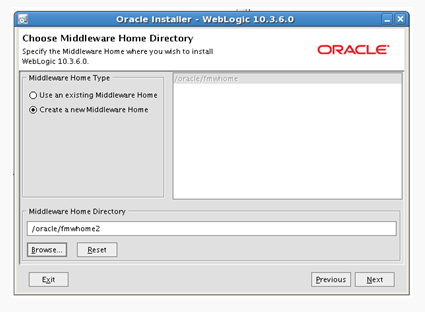
We can skip the security update as we NOT building this environment for production: For production, it’s advisable to have this section filled.
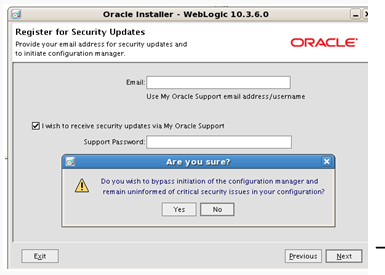
Click No

Click Yes

Click on the checkbox and then “Continue”.
Use Typical Install: We would need both WebLogic Server and Oracle Coherence in installing SOA Suite. Therefore it’s better to go for selecting Typical instead of Custom.
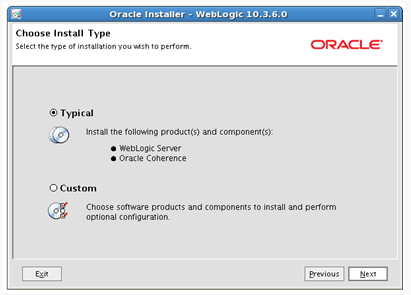
Select JDK version: If you want to change/add another JDK apart from your default JDK here where you need to update.

Click Next: Installation wizard will auto-detect the WebLogic server and coherence installation folder.

Click Net to confirm: Here you can view what are the components that are getting deployed under WebLogic Server and Oracle Coherence.
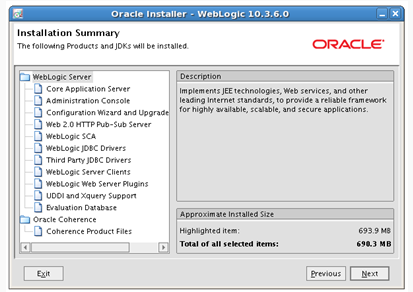
Installation begins: Wait and watch
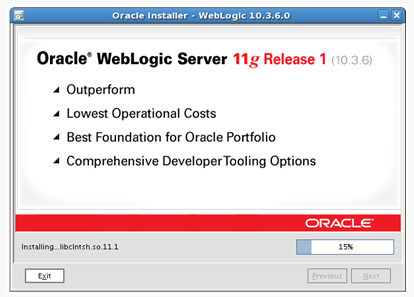
Successful Installation Confirmation: If you see this screen, that means you have successfully installed WebLogic. For the time being, you can uncheck the “Run Quickstart” as we are not done with our installation yet.

You liked the article?
Like: 0
Vote for difficulty
Current difficulty (Avg): Medium

TekSlate is the best online training provider in delivering world-class IT skills to individuals and corporates from all parts of the globe. We are proven experts in accumulating every need of an IT skills upgrade aspirant and have delivered excellent services. We aim to bring you all the essentials to learn and master new technologies in the market with our articles, blogs, and videos. Build your career success with us, enhancing most in-demand skills in the market.